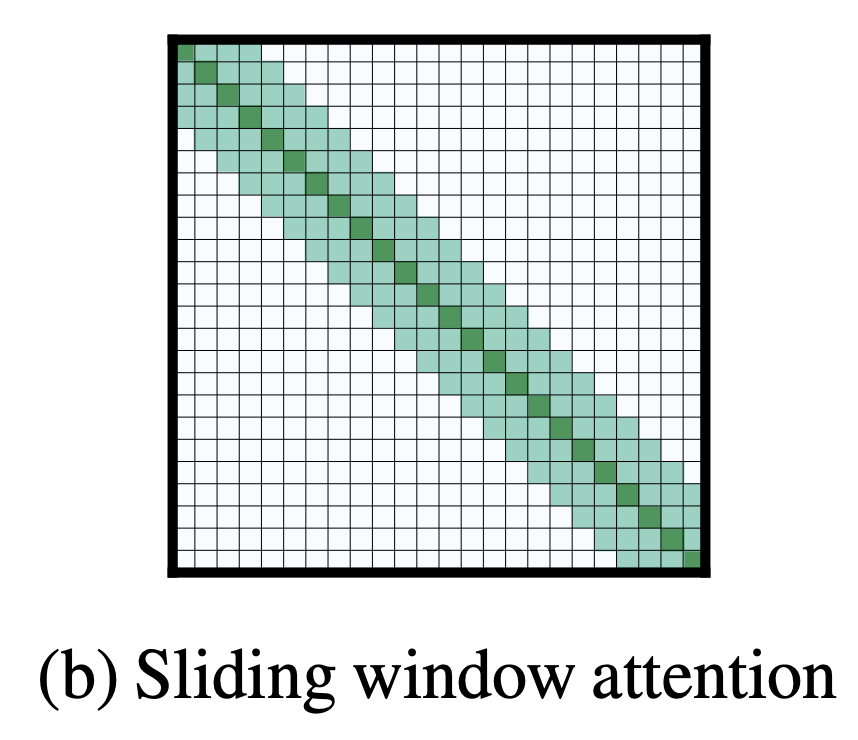- Given the importance of local context, the sliding window Attention pattern employs a fixed-size window Attention surrounding each token
- multiple stacked Layers of such windowed Attention results in a large Receptive field, where top Layers have access to all input locations and have the capacity to build representations that incorporate information across the entire input
- But a model with typical multiple stacked transformers will have a large Receptive field. This is analogous to CNNs where stacking Layers of small kernels leads to high level Features that are built from a large portion of the input (Receptive field)
- Depending on the application, it might be helpful to use different values of w for each layer to balance between efficiency and model representation capacity.
- Given a fixed window size w, each token attends to 21w tokens on each size
- Complexity is O(n×w)
- w should be small compared to n
- With l layers, Receptive field size is l×w

